Digital twins drive smart oil & gas production
Read how digital twins are transforming the way oil & gas companies operate, helping them to monitor, maintain & manage equipment and processes.
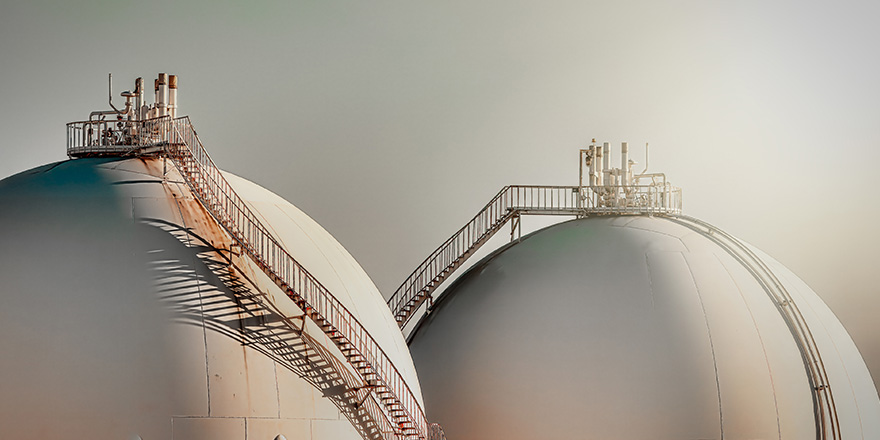
Digital twins are completely transforming the way oil and gas companies operate, helping them to monitor, maintain, and manage equipment and processes.
Digital twins, a virtual representation of an object or process, act as a bridge between your physical and digital assets. They give you a real-time view of the process variables of your equipment and personnel operating machinery and working in the field. This is critical in an asset and operations-intensive industry like oil and gas.
Also, by using an IoT digital twin, you can analyze all the data and systems that are involved in implementing any new ideas before they go live. They also can perform asset simulation dry runs to maximize asset value, such as improving operational and capital spending tradeoffs.
Digital twins are also useful in the well-construction process. According to BCG research, tools like advanced data analytics and machine learning (ML) can cut engineering hours by up to 70% during field development. Digital twins can be integrated into subsea production systems. They can also reduce the time required to interpret information and develop prospects through AI-assisted image recognition.
Digital twins and the oil extraction process
Software AG has developed a digital twin system specific to the oil and gas industry using its Cumulocity IoT platform. With this, you can create a virtual copy of any production system. Here are some examples of digital twins of important oilfield assets.
- Pump Jack
Pump jacks extract crude oil from a well when there is not enough pressure to force it to the surface. In the Cumulocity IoT platform there is a model of a pump jack, along with the relevant KPIs. The measurements can be mapped from a machine-learning model running in the background or can be mapped from the primary models (HYSYS, SimSi, Aspen-Plus, etc.). Various scenarios can be simulated and compared against real-time data within Cumulocity IoT, find patterns, visualize the data and predict/detect possible pump jack problems and plan predictive maintenance.
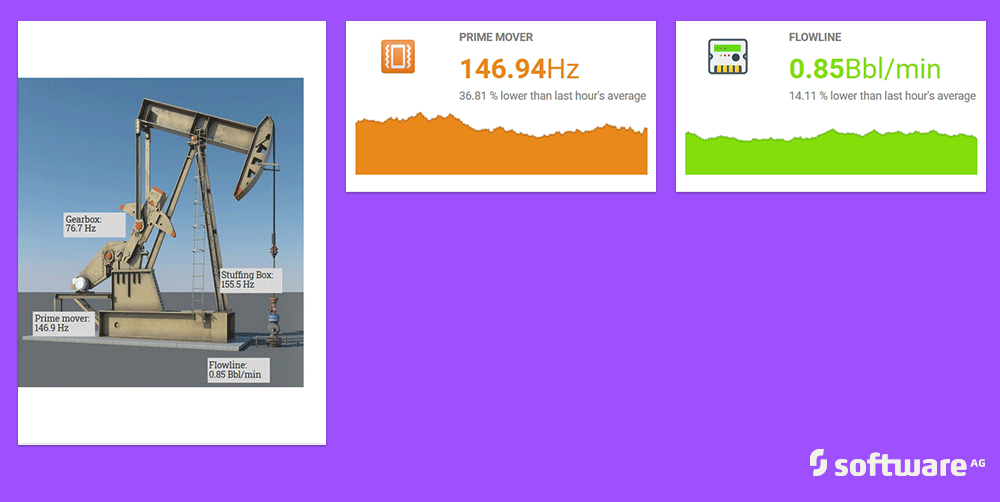
- Inspection/Christmas tree
A Christmas (Xmas) tree is an assembly of valves, casing spools, and fittings that regulates the flow of pipes in a well. The components of these trees are at risk of degradation and unexpected failures because of prolonged and continuous operation. Like the pump jack, the Xmas tree model’s measurements can be mapped to an ML model or a primary model. Then operating patterns can be found and analyzed quickly, and actionable alarms can be created, or maintenance can be planned.
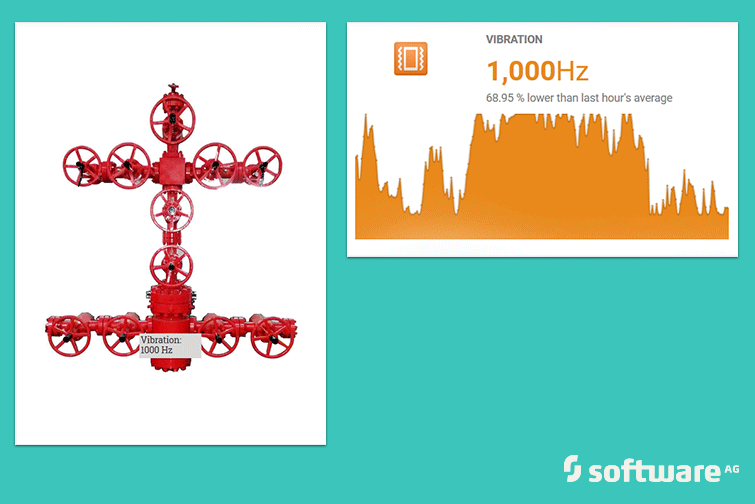
- Separator unit
A three-phase separator uses gravity to separate production fluids into gas, oil, and water phases. Once the digital twin is running, real-time data can be compared against simulated scenarios, to optimize operations, drive maintenance scheduling, and avoid unplanned shutdowns.
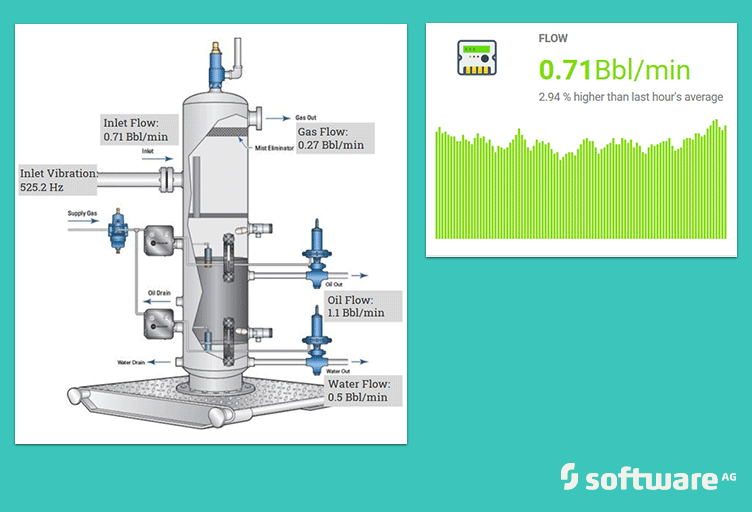
- Pumps
Pumps play a significant role in transferring fluids and gases from one location to another; oil fields and refineries cannot function without them. This digital twin model is constantly compared to real-time data and continuously monitoring the pump’s suction and discharge pressures and determining the pump’s operating point based on differential pressure. A live customizable dashboard provides transparency, while also indicating whether energy can be saved by operating more efficiently.

- Oil storage tanks, facilities
Oil storage tanks are constantly faced with critical challenges – from severe weather to leakage – that must be immediately fixed or repaired. If crucial data on their condition is not available, it can be disastrous. Losses of volume and downtime can cost days, if not months, of missed opportunities. The ability to immediately access accurate and up-to-date information is also important from a cost-cutting standpoint.
A digital twin with IoT can provide immediate access to your data, offering clear visibility of conditions and issues, to avoid unplanned shutdowns or spill and resulting in substantial cost savings.


- Overall facility overview
Because oil and gas production links are dynamic and varied, involving a wide range of disciplines, the corresponding dynamic digital twin model is created based on different applications and business requirements.
To ensure success you must first identify insights that could lead to better capturing the business value from your data. The first stage is to create a fully integrated twin for digital assets and facilities. The asset/facility view for Cumulocity IoT’s oil and gas digital twins provides a summary of assets. It also provides relevant information such as alerts, monitors the availability and utilization of assets. This helps facility engineers run the facility optimally and enables them to work on any issues in a timely manner.
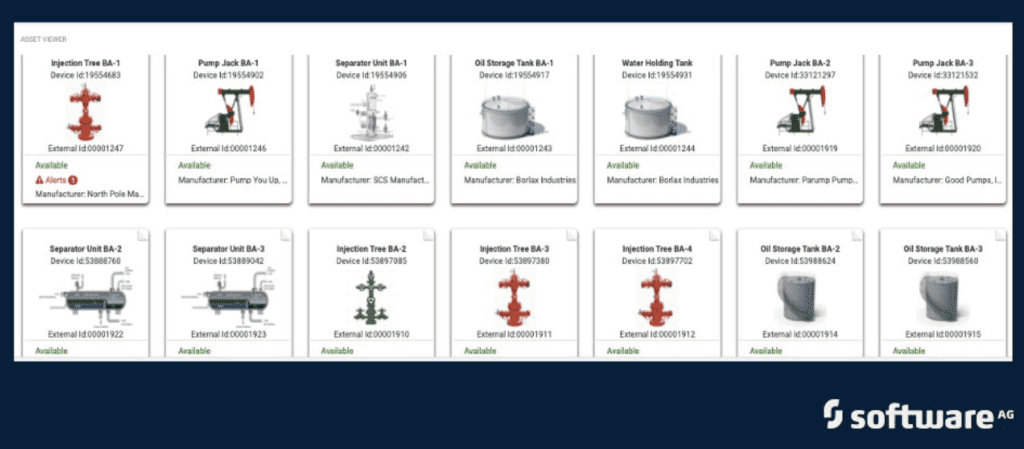
Cumulocity IoT’s digital twin system for the oil and gas industry is a ready-to-deploy-solution and, by using this, a virtual copy of all the production systems all over the world can be created. Our digital twin solution helps oil and gas companies transform into digitalized service companies, enabling domain experts to deliver business outcomes faster with integrated, customizable self-service tools.
The platform includes industry-leading device management, streaming analytics, machine learning, business process management, and enterprise and cloud integration, all based on Software AG’s Digital Business Platform (DBP). These digital twin models are available in the cloud, at the edge, on-premises, and also for hybrid environments.
Learn more about Cumulocity IoT and get a free trial by clicking below.